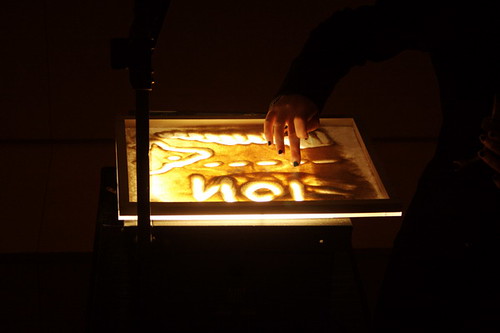HALIFAX – What happens when the public space of the city intervenes in the private experience of art? Find out when panelists Kim Morgan (Chair) – NSCAD University, Sol Nagler (Chair) – NSCAD University, Martha Radice – Dalhousie University,Nathan Ryan – NSCAD University, Ellen Moffat – University of Saskatchewan, Erin Wunker – Dalhousie University come together to contemplate inteventions of art in public space.
Members of the panel present the initial stages of an interdisciplinary SSHRC-funded research/creation project that uses emerging technologies to explore the interstitial space between the private and the public in relation to art. “Art” for us includes visual art, performing arts, and other streams of creative culture such as architecture, design and literature. We define public urban space as those spaces in the city that are accessible to everyone (regardless of ownership), in which strangers interact in many different ways. People’s experience of art is typically private, whether or not the art is in a collective setting. They move through the art gallery in the bubble of their own personal space. They watch films ensconced in the dark of the cinema. Their emotional reactions to art are located in the body, and divulged to just a few companions. However, some members of the panel suggest that the public space of the city can challenge and interfere with the private experience of art. Indeed, they posit that the public space of the city can creatively be made to intervene in the private space of engagement with art.
WHAT: Tracing the City – Interventions of Art in Public Space
WHEN: Today – May 20th, 1pm-3pm
WHERE: Room: AA Academy Building – Screening Room; 1649 Brunswick Street, Academy Building, NSCAD Film School,
(For a map and directions click HERE)
HOW MUCH: Free
In the second decade of the 21st century, cultural shifts have occurred in the configuration of media as the private sphere moves into the public domain: private phone calls in public space, LCD’s in the air, on the streets or in the palm of the hand. These rhizomatic experiences of text and image along with non-linear interfaces and hyperlinked data have encouraged a reconsideration of the role of the storyteller and the text as the linear backbone of our narrative experience.
The Cineflux symposium (taking place May 19 -21, 2011 at NSCAD University) will address a range of critically important issues and topics relating to what has been described as the ‘digital turn’ in contemporary society. Session themes will confront key philosophical questions concerning technology including the subsumption of analogue into digital, the conflation of image/ text, the increasing obsolescence of technologies, the research creation axis, new media and changing modes of production, exhibition and distribution.
Invited keynote and plenary speakers are leading thinkers and practitioners in the arts, as well as paper, workshop and colloquium presentations by researchers and practitioners in all fields of contemporary cinematic engagement.
The Cineflux Symposium will take place from May 19-21 at NSCAD University’s Academy Building. 1649 Brunswick Street. Halifax NS.
Photo by Hugh Pouliot

